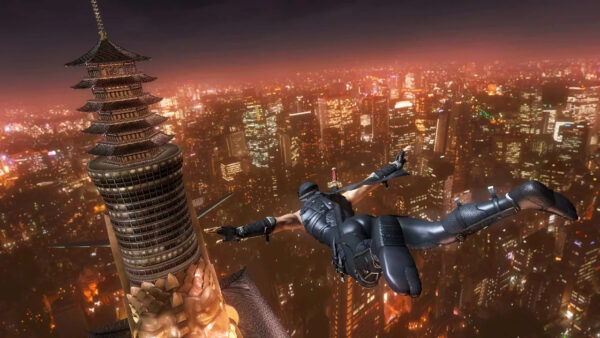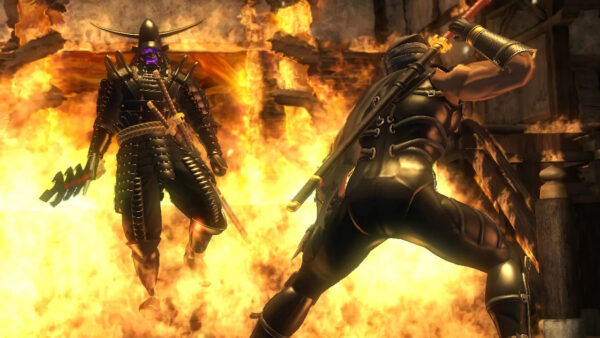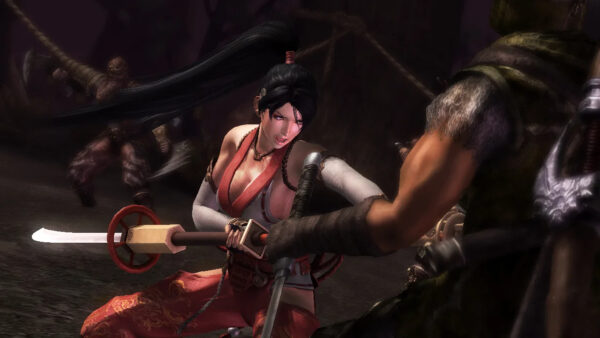
Who doesn’t love ninjas? They were always amazing to see in movies and tv shows as a kid and playing as ninjas in video games was always a great time. Ninja Gaiden is one of the best ninja video game series around and is a franchise that fans have loved since its arcade debut and the legendary NES trilogy.
When the original Xbox came around, Dead or Alive creator Tomonobu Itagaki revived the series for Tecmo, with the team apply named Team Ninja. Their take on the franchise gave us a brutal hack ‘n slash game with high difficulty, gore, and over the top action. Itagaki and the team later released an update called Ninja Gaiden Black and a sequel, Ninja Gaiden II, before his acrimonious departure from the company.
While Itagaki was focused on the Xbox, Tecmo had a port made for the PS3 entitled Ninja Gaiden Sigma. This version introduced some new features to the game, but many considered it inferior and Itagaki himself didn’t care for it. A Sigma version of II later followed, which received many of the same complaints from fans, and Ninja Gaiden III was made without Itagaki’s involvement at all due to his split from Koei Tecmo. The poor reception of the third game led to a new version being made to address the problems and was called Ninja Gaiden 3 Razor’s Edge. This version was much was better received, but fans still didn’t like it as much as the Itagaki games.
The Ninja Gaiden: Master brings us Ninja Gaiden Sigma, Sigma 2 and Ninja Gaiden 3: Razor’s Edge on new systems, but is it worth checking out? That is a serious matter of debate, because while the Ninja Gaiden games are great, this collection does have issues. In fact, this collection turned out to be a bit messy in a few ways.
Playing on the Nintendo Switch for this review, there were certain expectations based on statements by Koei Tecmo. Press releases had promised a Switch port aiming for 720p and 60 fps, but the actual result falls short of that. Ninja Gaiden Sigma translated well enough, but Sigma 2 and Ninja Gaiden 3 Razor’s Edge feel like they were put through a blender and quickly stitched back together.

Ninja Gaiden Sigma may not be on the level of Ninja Gaiden Black, but it still remains a mostly decent game. The visuals here did get touched up a bit, and the gameplay still remains fun and after all, Itagaki did take some ideas for his version of Nina Gaiden II from Sigma. This particular port is well handled, and it contains some nail-biting action and intense difficulty like always. It performs extremely well in handheld mode, and aside from a camera issue here and there, is a bright spot in this collection.
Ninja Gaiden Sigma II is a different story altogether when it comes to this collection. The gameplay is over the top like always, but being that is the Sigma version, the gameplay feels watered down compared to the Itagaki original. Allegedly, the source code for Ninja Gaiden Black and the vanilla version of Ninja Gaiden II were lost, which necessitated the use of the Sigma versions here. It is disappointing if true because the best versions are not being used.
 Ninja Gaiden Sigma II should be a lot of fun, and the added decapitations and overcharged finishing moves really add a lot here. The problem is not just that Ninja Gaiden Sigma 2 is a much easier game than vanilla Ninja Gaiden II and even Ninja Gaiden Sigma, but more that you feel overpowered at times. The game lacks the challenge that one expects from the series, with healing items appearing in abundance. It is not an exaggeration to say that the normal difficulty is very underwhelming here.
Ninja Gaiden Sigma II should be a lot of fun, and the added decapitations and overcharged finishing moves really add a lot here. The problem is not just that Ninja Gaiden Sigma 2 is a much easier game than vanilla Ninja Gaiden II and even Ninja Gaiden Sigma, but more that you feel overpowered at times. The game lacks the challenge that one expects from the series, with healing items appearing in abundance. It is not an exaggeration to say that the normal difficulty is very underwhelming here.
The main complaint with this port doesn’t have anything to do with the gameplay though, but rather the fact that this is just a bad port. The game struggles to run on the Switch at a stable framerate and came nowhere near the promised goal of 60fps. The image quality dropped horrendously low in both docked and handheld modes, and the game stuttered at random times. Oddly enough, the game functioned best during intense combat and performed well during some of the more infamous scenes.

Ninja Gaiden 3: Razor’s Edge does not fare well here either, disappointingly enough. This is especially upsetting because the game was launched first on the weaker Wii U system. The game is a dark mess visually in portable mode and performs only marginally better in docked mode. The image quality and frame rate were sub-par in almost every section, and the entire game felt unpolished. The Switch is home to many great action games, such as the ports of No More Heroes and No More Heroes 2, which function perfectly and that makes this comparison all the more disappointing. Ninja Gaiden 3: Razor’s Edge already had an uphill battle as a lower quality game, but this port is enough to turn anyone off.
What we have here is not an ideal collection on Switch and cannot be recommended. If you want a good port of Ninja Gaiden Sigma, then you are in luck, but you would be better off getting Ninja Gaiden Black on Xbox Series via Backwards Compatibility Mode. Likewise, vanilla Ninja Gaiden II via Backwards Compatibility Mode on Xbox is far preferable. Perhaps the other console versions of the collection that have promised 4K and stable 60 fps are also a better choice, but avoid buying this on the Switch.
Disclaimer: A review key was provided

